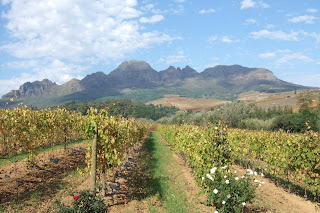
Foris 2006 Pinot Noir – Oregon - $13.98
The Foris Vineyards 2006 Oregon Pinot Noir is a nice and easy Pinot Noir that tastes and feels more like a $20-25 Pinot Noir than your garden variety mass produced versions from makers like BV Coastal, Mondavi Select, etc.
Very similar to a Bourgogne rouge, but with a New World Oregon twist, the wine has mineral and rich (not too rich) red berry aromas and flavors. Silky tannins and a nice supple finish round out a great, affordable and original Pinot Noir tasting experience from the US where most decent Pinot Noir starts at $30! It reminds me of a richer version of the Nicolas Potel Bourgogne Pinot Noir.
Foris’ Pinot Noir grapes do not come from the famed Willamette Valley, but the lesser known Rogue Valley in Southwestern Oregon. The label states that since 1974 Foris has been making wines in the Rogue Valley. I have had the “Fly Over Red” many times before ($13) from Foris which is a blend of Cabernet Sauvignon and Cabernet Franc and had always been pleased, especially for the price.
The Foris Vineyards 2006 Oregon Pinot Noir is a nice and easy Pinot Noir that tastes and feels more like a $20-25 Pinot Noir than your garden variety mass produced versions from makers like BV Coastal, Mondavi Select, etc.
Very similar to a Bourgogne rouge, but with a New World Oregon twist, the wine has mineral and rich (not too rich) red berry aromas and flavors. Silky tannins and a nice supple finish round out a great, affordable and original Pinot Noir tasting experience from the US where most decent Pinot Noir starts at $30! It reminds me of a richer version of the Nicolas Potel Bourgogne Pinot Noir.
Foris’ Pinot Noir grapes do not come from the famed Willamette Valley, but the lesser known Rogue Valley in Southwestern Oregon. The label states that since 1974 Foris has been making wines in the Rogue Valley. I have had the “Fly Over Red” many times before ($13) from Foris which is a blend of Cabernet Sauvignon and Cabernet Franc and had always been pleased, especially for the price.







